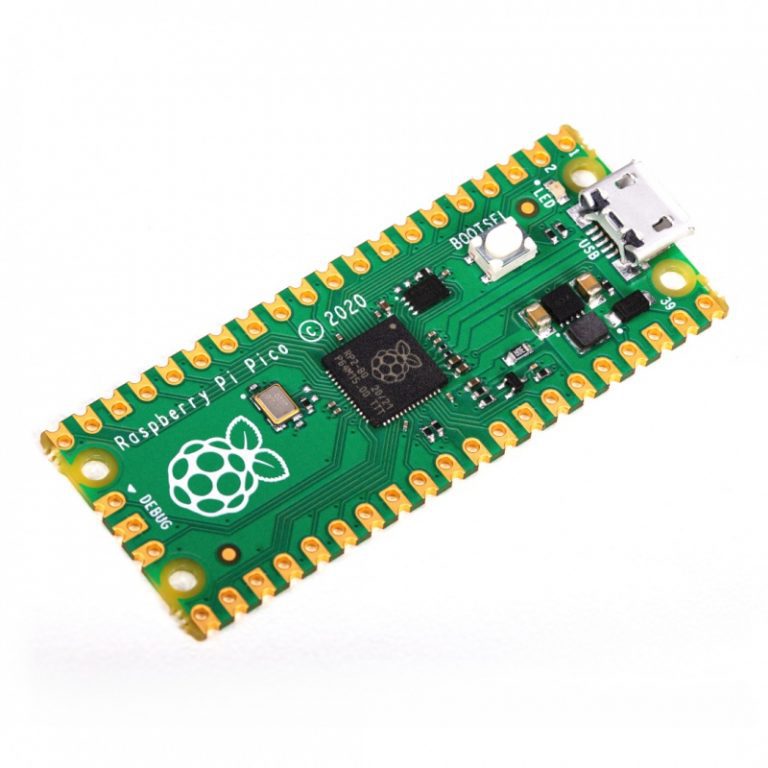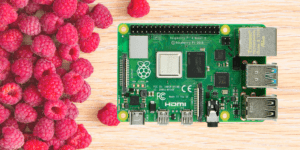Spis treści:
With the world grappling with a global shortage of semiconductors for some time now, we can expect more announcements of production delays rather than the release of new module models and minicomputers. But sometimes, however, there are days like today, when we finally have the opportunity to feel the wind of freshness on a face already almost breathless by longing for innovations in electronics. Today, my dears, it is time to celebrate – Raspberry Pi is expanding its range with the new Pico models.
Why the Pico?
As you might have learned from an update on production and deliveries from the Raspberry Pi Foundation a few months ago, the queue for minicomputers is longer than anyone could manage. As it happens in the global world, one crisis generates another and the effect becomes avalanche-like. It is precisely the nature of the realities of the whole system that factories simply cannot keep up with such demand.
It is for this reason that the Raspberry Pi Pico has become one of the more reliable boards with which there have been no significant problems with availability to date. By the way, it still offers pretty good functionality, which makes it suitable for numerous projects. After all, we have here the original RP2040 microprocessor, which has been successfully used on many models of other manufacturers’ boards – this popularity itself is proof of quality.
It has two ARM Cortez M0+ cores clocked at 133 MHz. The chip uses 246 kB of SRAM and 2MB of Flash memory. Combined with 26 GPIO pins (for a total of 40 pins) and the simplicity of construction, the board – as we have seen many times – is a great base for a variety of projects, both very simple and more advanced.

This, however, in the face of the model’s greatly increased popularity, began to be insufficient for many users – many found the simplicity of the standard Raspberry Pi Pico troublesome – some were missing wireless connectivity, while others were annoyed by the fact that even the simplest projects required soldering of leads. In the end, it is better to have more options, especially as the competition using the same chip is not sleeping.
Expanding the Pico range. Meet the Pico H, Pico W and Pico WH.
The expansion of the Raspberry Pi Pico range is the Raspberry Pi Foundation’s response to the requests and needs of fans and the trend of using Raspberry Pi models with smaller capabilities created in the face of the downtime of larger, more advanced boards. So what can you do in this situation with a board that can’t do as much as you’d like? Quite simply – improve it. The result of such a simple statement gave birth to not one, not two, but as many as three models of the board. In the end, the Raspberry Pi Foundation listened and acted, and the result is a whole range of Pico boards.
The heart of each new variant remains, of course, the good old RP2040. Thus, we will also have 26 GPIO ports at our disposal. The dimensions of the base, which is a rectangular PCB, remain roughly the same, but in this aspect the key role will be played by the components used. So let us see what we can count on in the new Pico models.
Raspberry Pi Pico W
Introducing a new variant of the Raspberry Pi Pico board that will stand out by having a module for wireless connectivity from the factory. Being more specific, this is the Infineon CYW43439, which supports IEEE 802.11 b/g/n Wifi and Bluetooth 5.2 connectivity.

With the ubiquitous connectivity of everyone to everyone and everything to the rest of the devices in the proximity according to the Internet of Things, this is no surprise. Just using wireless connectivity is a huge potential opportunity, and now that we have it as standard in the Raspberry Pi Pico W… what more could you want?
Raspberry Pi Pico WH
And yes, you could want more. And why not fulfil this request too? The next variant is even better equipped – in addition to wireless connectivity, the Raspberry Pi Pico WH also comes with 40 goldpins pre-installed and an additional 3-pin JTAG connector. This makes it ideal for learning electronics, and people unfamiliar with soldering irons will be able to explore electronics without any problems. The additional connector only completes the picture. It may prove useful both in hobbyist terms and for industrial purposes. In short, the Pico will now be even more versatile than before.
Unfortunately, however, we will have to wait a little while for this variation of the Pico, as it is not available for sale immediately on launch day – the first deliveries are scheduled for September 2022.
Raspberry Pi Pico H
However, what if wireless communication is unnecessary for a given project, or if you want to keep the hardware platform as simple as possible, but do not want to specially interfere with the board design? In this situation, the third option will be the best choice.
The Raspberry Pi Pico H still offers 40 pins already in place and a JTAG connector, but no wireless module. Whether this is an advantage or nothing special is for you to determine, but it is worth remembering that we are still nevertheless dealing with an improved and refreshed Raspberry Pi Pico board.
Trust us with the new Raspberry Pi set
Botland, as you know, is not just about boards. The shelves of our warehouse and the hearts of our team are full of various devices and accessories from many branches of electronics. From 3D printers to the smallest passive components or assembly parts, such as screw washers. We are aware that there is a lot of this and that is why, in order to help you complete your order, we want to offer the new Pico in our kit.
So that you can already enjoy the possibilities of the WH variety, the kit includes a Raspberry Pi Pico W with specially soldered connectors. Plus a whole package of components and extras necessary for prototyping. Elements such as buttons, LEDs, a buzzer and a potentiometer will be a great basis for building a simple user interface. For more advanced projects, an OLED display will be suitable.
And if you feel up to the task and are ambitious, you will certainly make good use of the other included components, such as the well-known and liked DS18B20 temperature sensor, motion sensor, photoresistor and voltage translator.
You don’t have to worry about the power supply either – you have all the necessary components already included (even several types of power supply to the board). Surrounded by all the necessary small parts and a contact plate – everything you need to start playing with your new Raspberry board model.
How useful was this post?
Click on a star to rate it!
Average rating 0 / 5. Vote count: 0
No votes so far! Be the first to rate this post.





